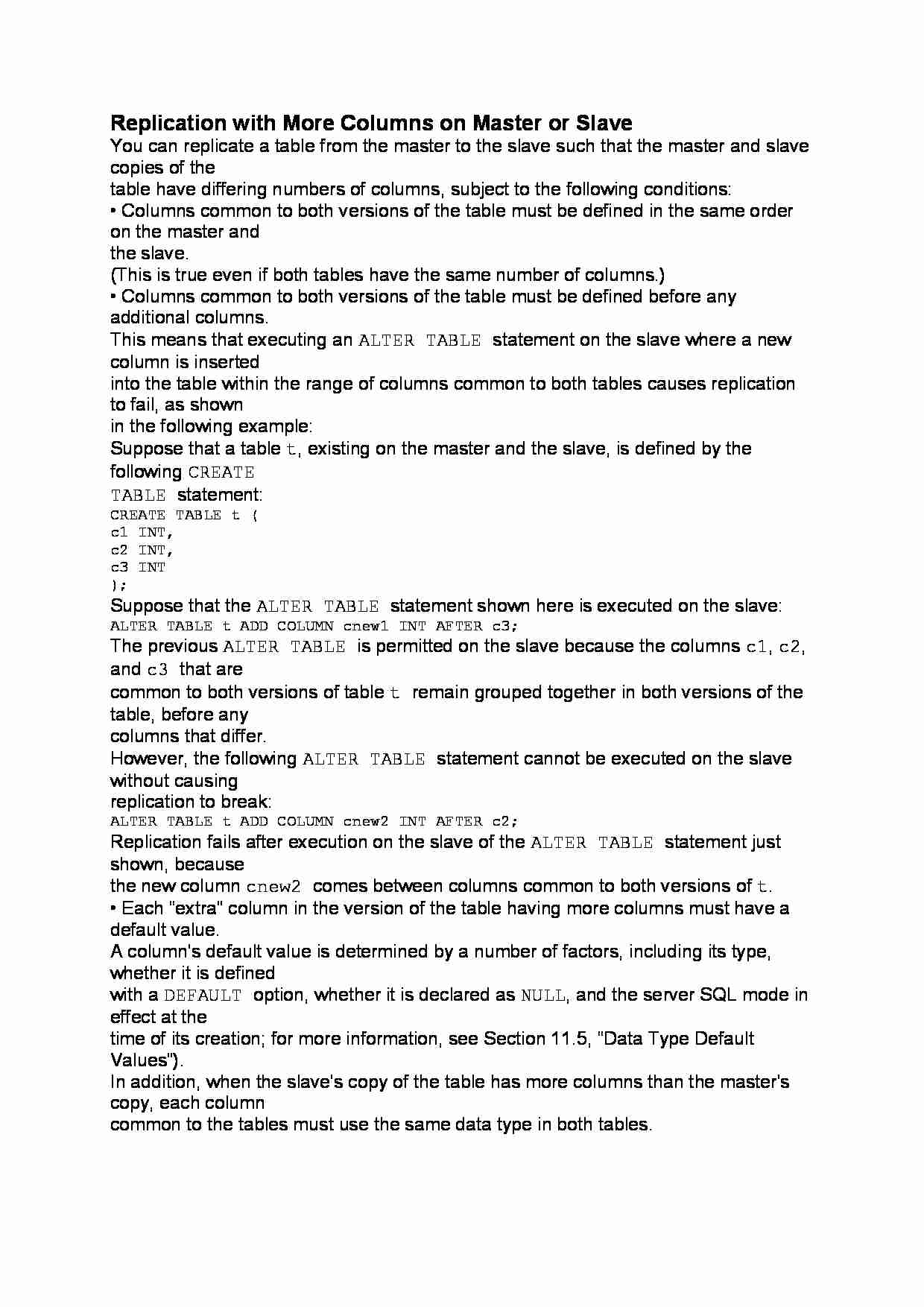
Replication with More Columns on Master or Slave
You can replicate a table from the master to the slave such that the master and slave copies of the
table have differing numbers of columns, subject to the following conditions:
• Columns common to both versions of the table must be defined in the same order on the master and
the slave.
(This is true even if both tables have the same number of columns.)
• Columns common to both versions of the table must be defined before any additional columns.
This means that executing an ALTER TABLE statement on the slave where a new column is inserted
into the table within the range of columns common to both tables causes replication to fail, as shown
in the following example:
Suppose that a table t, existing on the master and the slave, is defined by the following CREATE
TABLE statement:
CREATE TABLE t (
c1 INT,
c2 INT,
c3 INT
);
Suppose that the ALTER TABLE statement shown here is executed on the slave:
ALTER TABLE t ADD COLUMN cnew1 INT AFTER c3;
The previous ALTER TABLE is permitted on the slave because the columns c1, c2, and c3 that are
common to both versions of table t remain grouped together in both versions of the table, before any
columns that differ.
However, the following ALTER TABLE statement cannot be executed on the slave without causing
replication to break:
ALTER TABLE t ADD COLUMN cnew2 INT AFTER c2;
Replication fails after execution on the slave of the ALTER TABLE statement just shown, because
the new column cnew2 comes between columns common to both versions of t.
• Each “extra” column in the version of the table having more columns must have a default value.
A column's default value is determined by a number of factors, including its type, whether it is defined
with a DEFAULT option, whether it is declared as NULL, and the server SQL mode in effect at the
time of its creation; for more information, see Section 11.5, “Data Type Default Values”).
In addition, when the slave's copy of the table has more columns than the master's copy, each column
common to the tables must use the same data type in both tables.
... zobacz całą notatkę



Komentarze użytkowników (0)